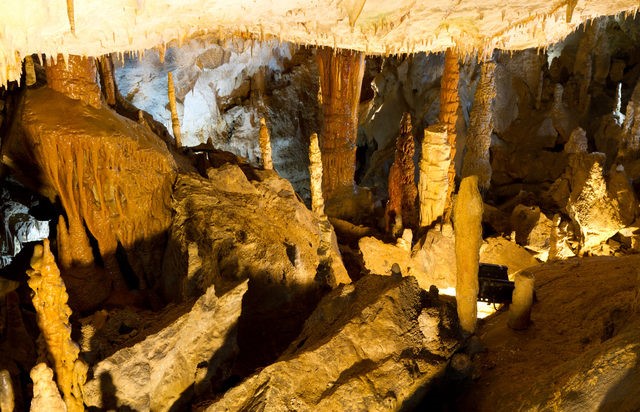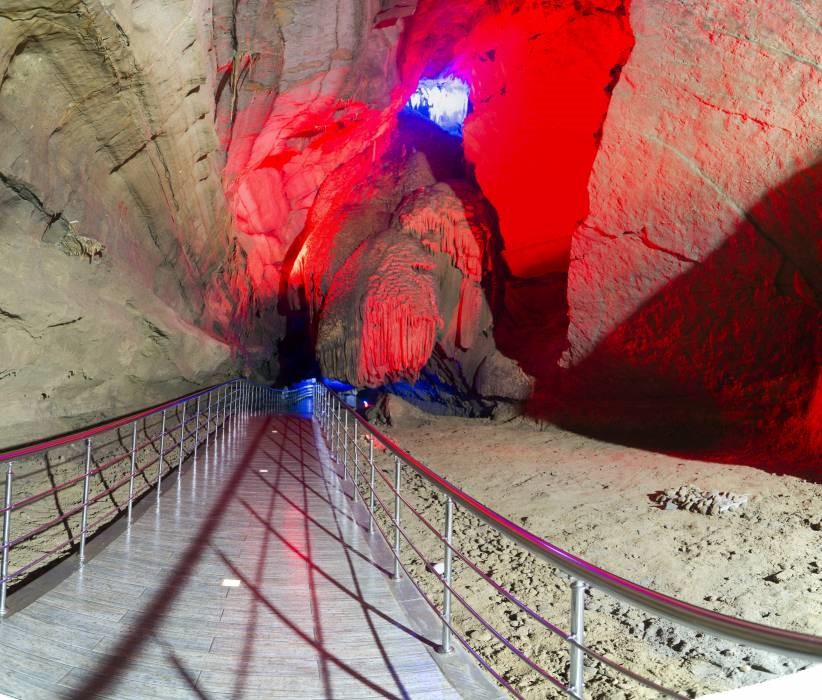GÖKGÖL CAVE
Gökgöl Cave is the 10th longest cave in Turkey and the 2nd longest one in Zonguldak with its length of 3350 meters. It is about 350 Million years old.There is an underground river in the cave. It has a walking path of 875 meters. The first researches in Gökgöl Cave were carried out in 1976 by geologist Temuçin AYGEN and British cave researchers Chris BAUER and Harvey LOMAS. It was opened to tourism in 2001. It has hosted approximately 300,000 visitors since the day it was opened to tourism. Inside of Gökgöl Cave is extremely rich in terms of drop stone accumulation. Sections of the cave are described with names such as Fossil Entrance, Asthma Hall, Hall of Wonders and Hall of Miracles. Besides travertine, stalactite and stalagmite columns, it is decorated with flags, curtains and flow dripstones.
Gümeli Yew Tree (Zonguldak-Alaplı)

It is located in Alaplı district of Zonguldak province. It is 4115 years old. It is the oldest tree in Turkey and 5th oldest yew tree in the world.
- Crown Diameter: 9,5 metre
- Body Diameter: 245 cm
- Length: 23 metre
The area where the tree is located was included within the borders of Gümeli Natural Monument on 14 July 2016. The Gümeli Yew Tree was also named as Memorial Tree on April 2,2018.
Filyos castle

The settlement, which was under the rule of various kingdoms in the Hellenistic period, was destroyed and plundered by the Romans in 70 BC while under the rule of the Pontus Kingdom. After the city was rebuilt by the Romans, it became a commercial and fishing settlement of Roman provinces. In addition to maritime trade, the city is in an important position with its close proximity to the mouth ofthe Filyos River and traded with inland areas.
- Filyos Castle, located in Zonguldak Filyos and thought to have been built by the Romans, was built on the cape, which is a point of the city overlooking the sea.
- Large stones were used in its construction to give it a solid and imposing appearance.
- After the castle remained in ruins for a long time, repair work was carried out by the Ministry of Culture and Tourism in 2003. The first settlement is on the castle hill in the north of the city.
- Today, there are walls belonging to the Medieval Castle and the remains of towers dating to the Hellenistic-Roman periods.
- To the east of the castle hill, marble columns and pedestals, marble inscriptions, stone sarcophagi and brick tombs were unearthed.
DEVREK

- Devrek District was established on a hollow area surrounded by mountains
- Devrek, usually surrounded by forest, is rainy and humid
- Devrek walking stick body is made of cranberry and its stem is made of walnut wood. In form, it is two snakes spiraling into a tree with their heads pointing towards the stem. The handle is the classic half-rounded cane handle. In addition, stems such as „snake, hawk, duck, horse head, goat’s feet” are also made.



